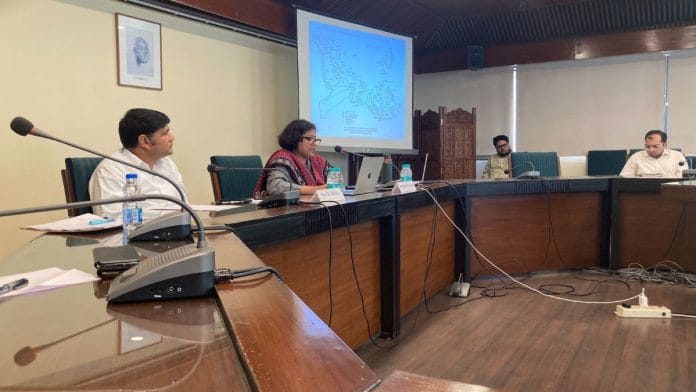New Delhi: Stories of the Portuguese colonisation of India are commonly associated with Goa. But there is an eastern coast angle to it too. It involved a thriving economic corridor run by renegades between India’s Coromandel Coast and South Asia. And they were operating outside of Portuguese state control for a long time.
“Portuguese settlements existed all across India and not in just Goa. They were present in the Coromandel Coast (present-day Tamil Nadu) and the Bengal Coast,” explained Smarika Nawani, a fellow at the Prime Ministers’ Museum and Library Society (PMML), during her recent lecture, ‘Portuguese Presence in the Maritime World of Coromandel Coast and Archipelagic Southeast Asia (1511 – 1662 CE)’.
In the Coromandel Coast, Portuguese settlements existed in Pulicat, Mylapore (a present-day neighbourhood in Chennai) and Nagapattinam, added Nawani. “From here they procured textiles for trade in Malacca, before returning with spices.”
The textiles-spice trade between the Eastern coasts of peninsular India and the Southeast Asia archipelago has existed since “time immemorial” said Nawani. But changes like the degradation of ports and hostile climate events adversely affected these ties.
Conquest of Malacca
Portugal was among the earliest European nations to construct a global trading network spanning South America to Asia. And when it saw the opportunity to increase its economic footprint through the trade corridor between the Coromandel Coast and Malacca, it took it.
“The conquest of Malacca by the Portuguese in 1511 was a rupture for the region. The hinterland did not produce anything of substance. All goods had to be brought in. Trade defined the allegiance of the neighbouring kingdoms,” explained Nawani.
With their hold on Malacca secured and the construction of a fortress in the city, the Portuguese began to set up administrative structures to maintain the flow of commercial traffic. The conquest of Malacca, was at that point in history, the furthest conquest by a European country in the world.
Furthermore, as Nawani explained, the conquest of Malacca gave Portugal control of a traditional trading choke point. The fort of Malacca enabled the Portuguese Empire to become one of the chief suppliers of precious spices. They took cloves, nutmeg and pepper from the archipelagic regions of Southeast Asia to Europe.
The conquest of Malacca also enabled the Portuguese to set up settlements all the way to the coast of Japan (in Nagasaki) and create a global colonial enterprise.
Also read: British distorted India’s diverse judicial practices. Even created a North-South divide
The freebooting privateer enterprise
The conquest of Malacca was led by Alfonso de Albuquerque, the first Duke of Goa and the Viceroy of Portuguese India. But the outposts on the Coromandel coast were, according to Nawani, mostly “freebooters, renegades and disgruntled army deserters”.
Formal state control was minimal in the early years of the operation of the Portuguese settlements in Mylapore, Pulicat and Nagapattinam. Privateers conducted trade on the Pulicat to Malacca routes before the Portuguese state in Goa decided to act.
“To rein in the privateers and renegades on the Coromandel Coast, the administration in Goa began sending Casados – Portuguese men married to indigenous women and settlers in Lisbon’s foreign outposts – as a means to create a linkage between the East and West in India,” said Nawani.
The Portuguese focused on coastal settlements, initially. They were not inclined toward capturing land during this early phase of their colonial expansion.
“The Portuguese took the help of indigenous merchants for the procurement of goods, especially from the textile merchants on the Coromandel coast. Similarly in Malacca, indigenous agents would procure the goods from the locals and sell them to the Portuguese,” Nawani said while responding to an audience question about the economic nature of Portugal’s presence in the Indian Ocean region.
So, what was the fate of Portuguese settlements, particularly those on the eastern coast of India? Nawani told ThePrint that, toward the end of the Portuguese enterprise, they moved into the settlements created by the British.
“They (the settled Portuguese) never moved to an area with a Dutch presence. The Vereenigde Oostindische Compagnie (VOIC) focused on capturing Portuguese trading settlements. The English East India Company had the principle of coexistence and allowed for the Portuguese to live in their settlements,” added Nawani.
The arrival of the VOIC – or the Dutch East India Company – led to the fermentation of a rivalry between the two colonial enterprises. And Portuguese soldiers were unprepared for this war.
“The Portuguese during this period (1511 – 1662) controlled the Indian Ocean world. The result was an ecological transfer from Southeast Asia to the Americas and Europe and vice versa. Spices such as cloves, which were unique to Southeast Asia, were later grown in Mozambique, for example,” added Nawani.
(Edited by Zoya Bhatti)






